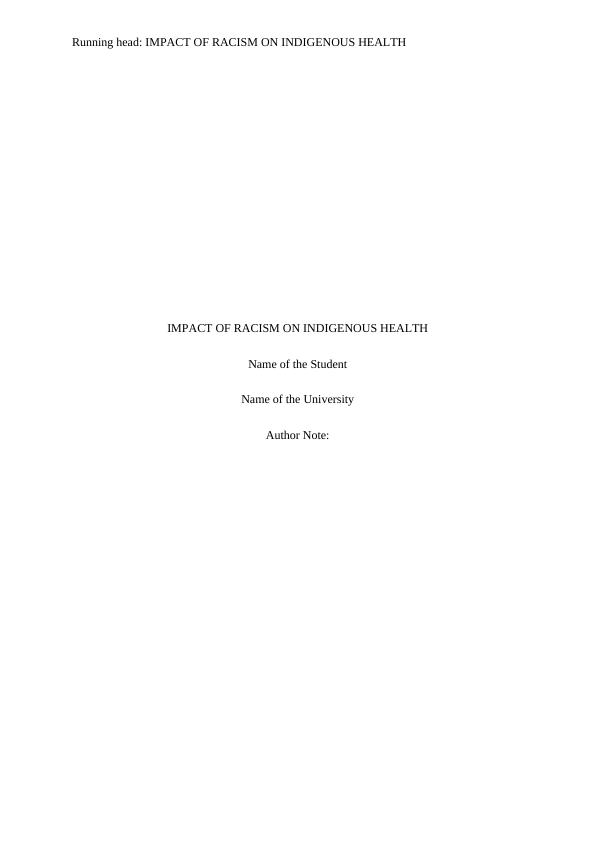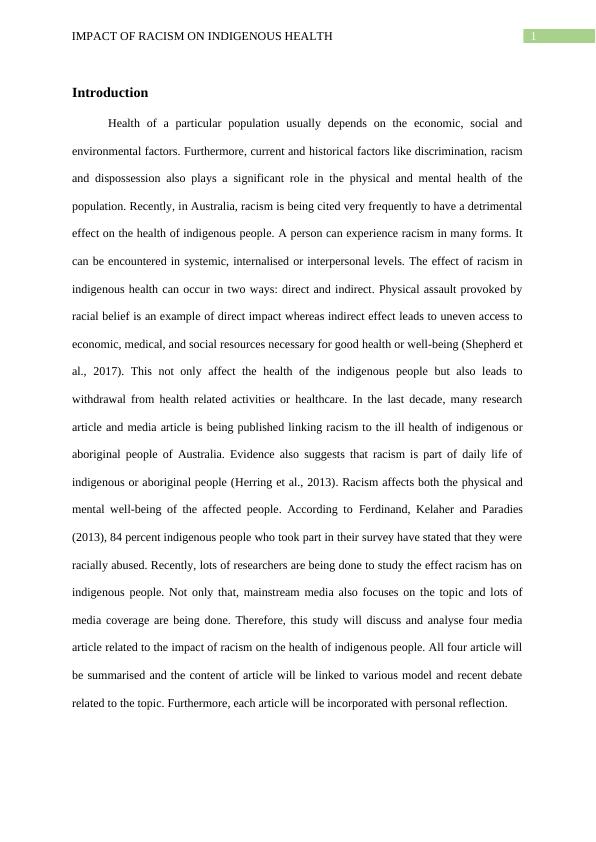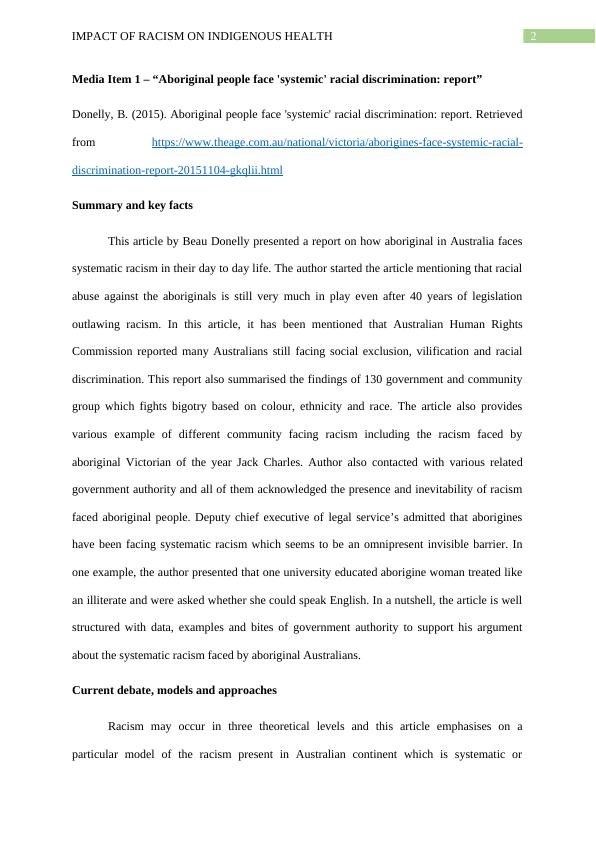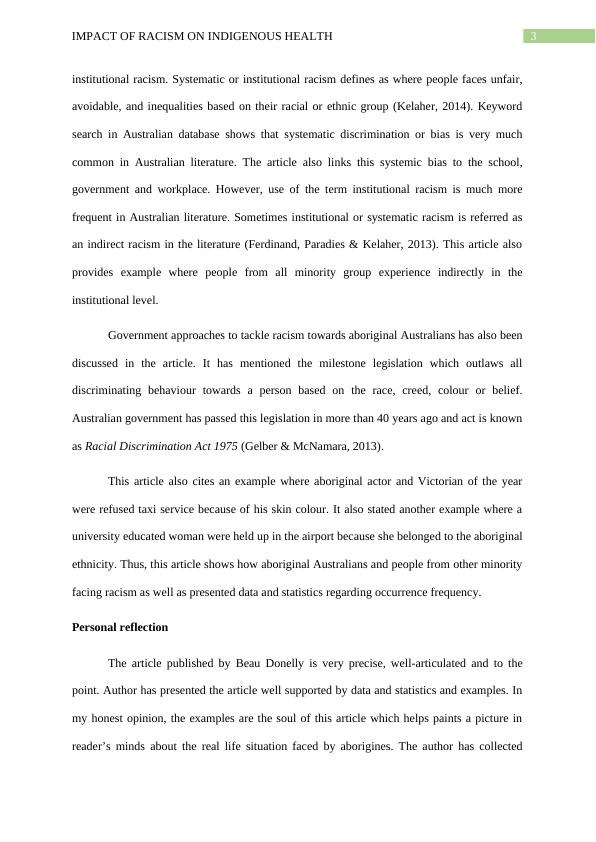Impact of Racism on Indigenous Health
Analyzing four media items on the impact of racism on Indigenous health in Australia and linking them to Indigenous models and current debate topics.
15 Pages4506 Words363 Views
Added on 2023-06-04
About This Document
This study discusses the impact of racism on the health of indigenous people in Australia. It analyses four media articles related to the topic and links the content to various models and recent debates. The study also provides personal reflections on each article. The subject is health and the course code and college/university are not mentioned.
Impact of Racism on Indigenous Health
Analyzing four media items on the impact of racism on Indigenous health in Australia and linking them to Indigenous models and current debate topics.
Added on 2023-06-04
ShareRelated Documents
End of preview
Want to access all the pages? Upload your documents or become a member.
Indigenous Health Perspectives: Impact of Racism on Healthcare for Aboriginals and Torres Strait Islanders in Australia
|14
|3872
|496
Racism's Impact on Mental Health: A Study on Australian Aboriginals
|6
|1628
|436
Racism, Prejudice and Discrimination in Canada: Impact on Health and Wellbeing
|13
|3578
|104
Determinants of Indigenous Health - PDF - Desklib
|15
|4076
|148
Indigenous Health Perspective - PDF
|15
|4431
|85
Social Determinants of Health : PDF
|13
|3900
|121




